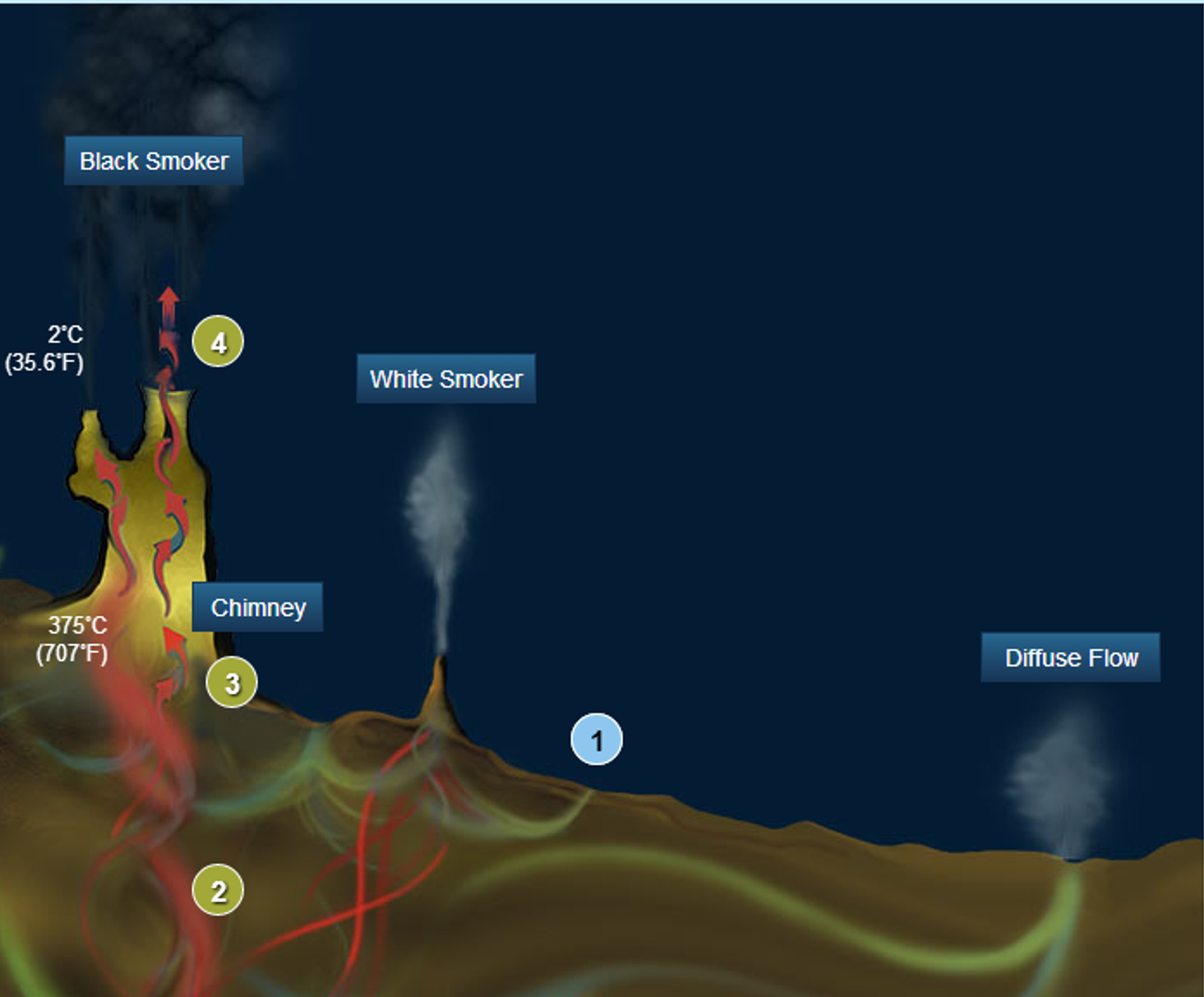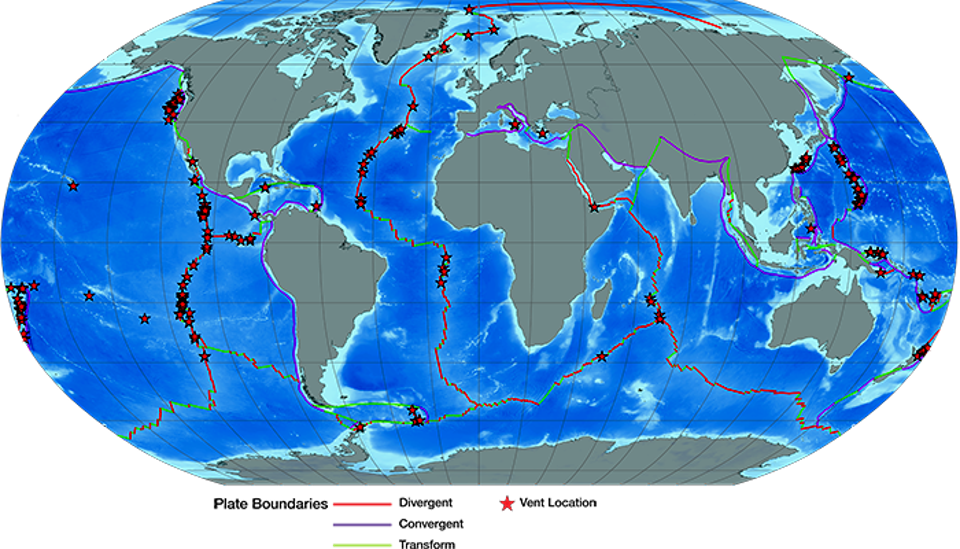
Features of the Seafloor |
||
Mid-Ocean ridges and rises are underwater volcanic mountain chain that extends for 65,000 km around our planet, creating new oceanic crust and pushing apart continents. You learned about these spreading centers on the Divergent Plate Boundaries page.

Image source: "Fig5.gif" by U.S. Geological Survey is in the Public Domain
What's the difference between a ridge and a rise? It has to do with how fast they are spreading apart. Ridges are spreading apart more slowly, and thus have steep slopes and higher elevations; Rises are spreading quickly, so have gentle slopes and are lower in elevation. Both contain a central rift valley that is 15-50 km wide, 500-1500m deep, and offset by fractures (transform faults).
Hydrothermal vents are located next to Mid-Ocean Ridges and support a vast variety of animal life. The Woods Hole Oceanographic Institution's Dive and Discover site has a fantastic page on hydrothermal vent systems. Check it out for more information!

Image from: "Hydrothermal Vents" by Woods Hole Oceanographic Institution is licensed under CC BY-NC 4.0
The beginnings of each type of hydrothermal vent is the same: Cold water enters into the crusts via cracks in the ocean floor. What type of vent that forms is dependent upon the temperature of the water.
Black Smokers: Magma heats up the water to about 350-400 °C. The heated water reacts with the rock, which:
The hot, buoyant water rises up through the crust, carrying the dissolved metals and hydrogen sulfide with them. As this hydrothermal fluid exits onto the seafloor, if forms a structure called a “chimney”.
White smokers are also underwater geysers but are much cooler in temperature (250 – 300 °C) and smaller in size. The white color comes from the dissolved silicate & and other non-metallic minerals in the water.
Diffuse flow vents are where hydrothermal water exits directly out onto the seafloor. This water is much cooler and lacks mineral particulates, so the water has a shimmery appearance instead of a white or black “smoke

"A black smoker chimney releases hot hydrothermal vent fluid-filled with mineral particles that make it look like smoke. Diving in Alvin in 1993, scientists Holger Jannasch and Cindy Van Dover found this black smoker on a vent site called “Snake Pit” on the Mid-Atlantic Ridge."
Image source: "archives-Selectedimagesalvindives2473-2626-2624-1-4_124179.jpg" by Woods Hole Oceanographic Institution is licensed under CC BY-NC 4.0

"Collecting live tubeworms requires a delicate touch. First, Jason’s pilots need to tap the worm, sending it down into its protective tube. Once it hides there, the vehicle’s manipulator arm can safely grab the tip of the tube without harming the worm inside. Take special note of the white flecks in the water nearby—these are actually created by microbes that live inside a vent directly under the worms. As the microbes “eat” hydrogen sulfide, a chemical in the vent fluid, they convert that compound into bits of pure sulfur that collect in the water and create a “snowblower” effect."
Image source: "3.jpg" by Woods Hole Oceanographic Institution is licensed under CC BY-NC 4.0
Below is a map showing the location of known hydrothermal vent locations. There are likely more, but, to paraphrase Dr. Ballard, those are the only places the exploration teams have been.

Image source: "Hydrothermal Vent Locations" by Woods Hole Oceanographic Institution is licensed under CC BY-NC 4.0
copyright Sonjia Leyva 2022 |
|